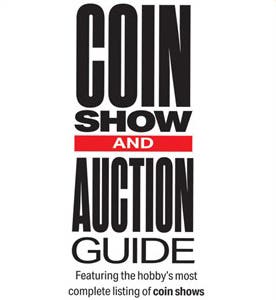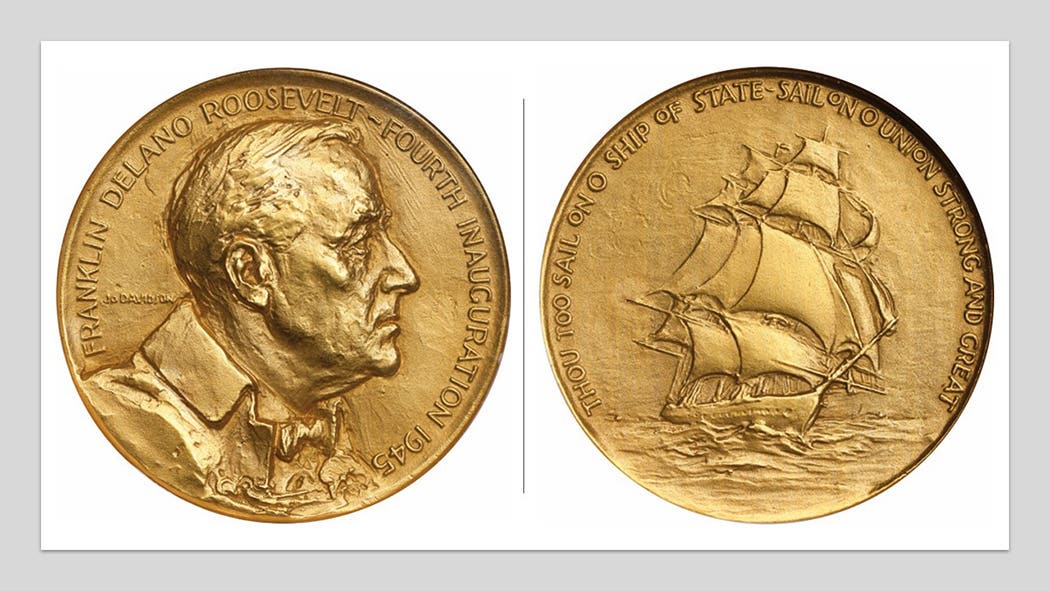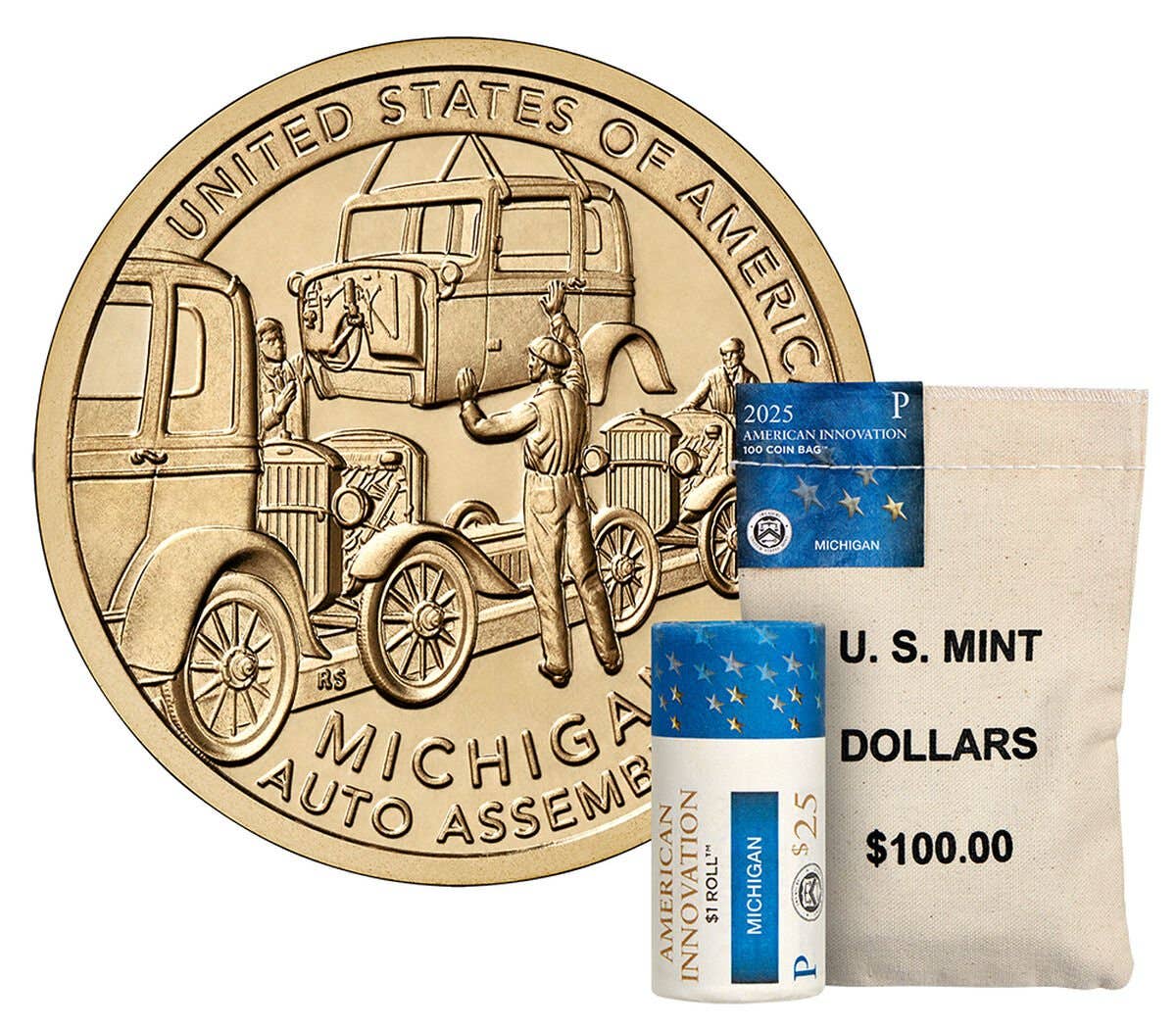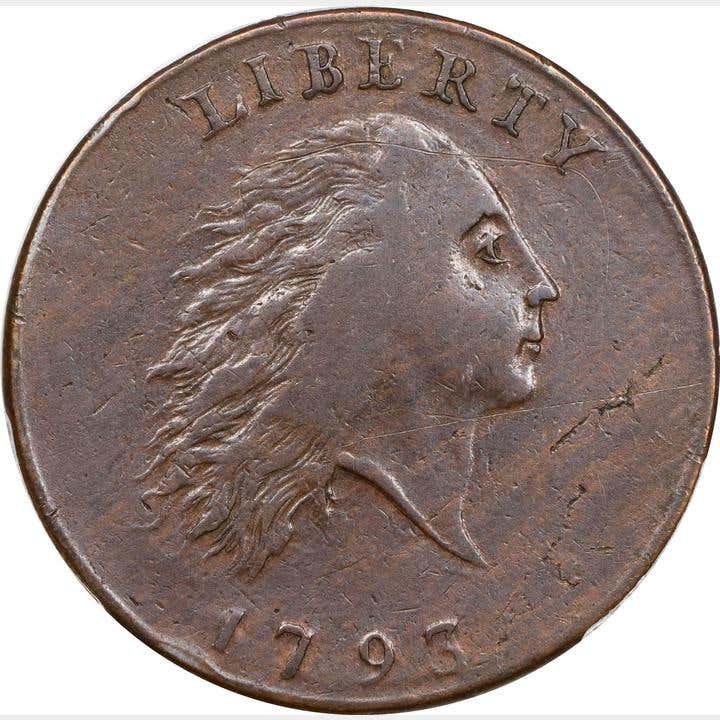Europe
Many don’t realize despite a history rich in gold coins and a national history rich in gold rushes and the lure of gold, the fact is our current situation with regard to historic gold coins could very easily have turned out very differently.
This article was originally printed in the latest issue of Numismatic News.
>> Subscribe today!
It is very easy to take something for granted. We do it all the time and that includes the coins we collect. There are millions of U.S. gold coins in the market today and that means if you want a simple type coin in a higher grade it is usually not that hard to find.
What many do not realize is that despite a history rich in gold coins and a national history rich in gold rushes and the lure of gold, the fact is our current situation with regard to historic gold coins could very easily have turned out very differently.
Most understand that even the current gold coins supplies are what is left from sometimes very large mintages over the years. Large percentages especially of double eagles and eagles were melted after the Gold Recall Order of 1933. The losses in both cases were in excess of 30 percent of all the examples ever made of the two denominations. There were smaller losses of other denominations as well including gold dollars and $3 gold pieces as the public upon learning of the Gold Recall Order was in many cases confused and assumed that they had to turn in all their gold coins.
Certainly as a result of the Gold Recall Order of 1933 millions of gold coins including some better ones were destroyed. What many fail to realize is that it could have been worse. In fact, the Gold Recall Order of 1933 could have virtually wiped out most of the gold coins ever produced in the United States had circumstances not been different. That might seem hard to believe, but it is not at all a stretching of what could have potentially happened and that is part of the story of tracking the gold coins of the United from the day they were made to your collection today.
The first thing that must be remembered is that gold coins were high denominations. That put them out of the budget range of most Americans at the time and that included most collectors. There are some small supplies of the early gold coins of the United, but the small numbers basically prove the situation.
The most extreme case would be the 1822 half eagle, which is a great rarity today with three examples being known. Had there been any serious collecting activity at the time of gold half eagles we would have more than three examples today. The 1822 was released into circulation and although we cannot be certain of its mintage the most regularly suggested number is over 17,000 pieces. It is more extreme than the other half eagles of the 1820s, but the fact is virtually none are known in Mint State suggesting virtually no one saved them at the time they were issued with what examples there are having circulated for some time before being saved. In the case of the 1822 only three examples were ever pulled from circulation for any reason and we cannot be sure those three survived because they were saved by collectors.
The situation did not change for decades. We find that there are very limited supplies of most gold coins going all the way up to the 1880s. It should come as no surprise as a gold eagle up to the time of the Civil War would have represented perhaps a week’s pay for many. How many people today would collect a coin where just one would cost their entire week’s pay?
To be sure there was collecting going on, but not involving any significant amount of coins when it came to gold coins. The collectors of the day were collecting cents and Colonial issues. The silver and limited gold coin collecting of the time was also not the way we now collect as it was only by date. The collecting of coins by date and mint would not even begin to gain popularity until after the publication of the Augustus Heaton Mint Marks: A Treatise on the Coinage of the United States Branch Mints and that revolutionary work was published in May of 1893.
As a result, the relatively few Mint State coins from a time like the 1850s to be found today were produced at Philadelphia unless they were found in a shipwreck or other hoards and while such finds are extremely important in supplying type coins today, the fact remains they involved normally only a couple dates so as you look up and down the line of gold eagle or double eagle dates from branch mints in the mid-1800s it is not unusual to see grading services report fewer than 10 and sometimes no examples at all in Mint State grades.
During much of the period prior to 1900 little really changed. The few collecting gold coins were still collecting only by date. Acquiring a proof example as opposed to a business strike was the likely way of assembling a collection. In terms of a numismatic demand for anything other than proofs, there was basically none. Thee wasn’t even secondary demand for proofs. In fact., in his book, A Guide Book of Double Eagle Gold Coins, Q. David Bowers in discussing the 1880s market for double eagles emphatically states, “There is no record to indicate that any collector or dealer knew which mintmarked issues were common and which were scarce.” Things had changed little in the 1890s where discussing the market for proof gold issues Bowers concludes, “The resale market for such coins continued to reflect about a zero demand and many continued to be spent.”
There were a few isolated exceptions to the general rule although normally any gold coin hoard from the 1800s was a hoard of gold and not a hoard of coins selected for their numismatic potential. There were numbers of gold dollar primarily the 1879, 1880 and 1881 which were saved in the Baltimore area and the reason was that they were low mintage dollars and some collector felt that saving hundreds of examples of each date would be a wise investment. In fact, the investment did not turn out so well for the person who did the hoarding as they were probably long since dead by the time the gold dollars would finally be marketed roughly 80 years later. There was also limited hoarding of some $3 gold pieces with much the same result.
Virgil Brand was an important collector of the 1880s and he did attempt to assemble sets involving all dates and mintmarks including gold. As it turned out, however, his heirs after his death in 1926 ended up actually spending or turning into banks as there was no market for his rarities.
The United States government also provides proof of the small market as it offered double eagles in the summer of 1932 for their face value plus postage and handling. Included on the list of available dates was the 1927-D. Today the 1927-D has been graded fewer than 20 times by the grading services and the most recent sale prices have been over $1 million. Such a situation would never have happened had anyone back in the early 1930s bothered to take advantage of the government’s offer.
There had been increased collector and dealer activity in the 1900s, but as the situation with the 1927-D points out there was still nothing that could have been called an active market for gold coins and especially ones from every mint and as a result there was no saving at the time. What relatively few gold coins there were, which could be traced to American citizens having saved them at the time of release, were in many cases small hoards assembled during the early 1930s when some decided to convert their bank notes into gold coins fearing the impact of a worsening economy and possible inflation. Such hoards, however, while sometimes having Mint State gold coins of various denominations were not assembled by collectors.
With the recall in 1933 followed by mass melting whatever gold coins remained in private hands were essentially in the minds of everyone at the time basically the only gold coins of the United States that had survived. It was not unlike the situation with Morgan dollars later where no one realized that while the 1903-O seemed like a great rarity there might be thousands sitting in Treasury vaults. Of course with gold coins any coins that were sitting in the Treasury vaults were melted, so if a 1927-D seemed scarce afterwards, it was assumed to have been destroyed.
If you had done a survey in the 1940s of what were the rare gold coins it might well look very different from such a survey today. In the case of Saint-Gaudens double eagles, for example, the two toughest dates today are the 1933 and the 1927-D, but back in the early 1940s the date most would have named as the great rarity would have been the 1926-D and 1924-S along with the 1924-D, 1925-D and S, 1926-D and S, 1927-D and S and all dates after 1928 including the 1933.
Interest in things like Saint-Gaudens double eagles and other gold coins was on the rise in the 1940s and that once World War II had ended would see the beginning of a lesser known but extremely important activity. American coin dealers began to travel the globe, but primarily to Switzerland and France in search of U.S. gold coins possibly sitting in bank vaults. There was good reason for the search as it was known that primarily from 1880-1932 millions of U.S. gold coins had been exported to the point where for a brief time in the 1890s there had literally not been enough gold coins in the Treasury’s vaults to back Gold Certificates and the banker J.P. Morgan arranged a loan to keep the U.S. government solvent.
Much of the post-World War II dealer activity was done quietly with no notice in numismatic publications and even very little discussion among major dealers. In his book American Coin treasures and Hoards Q. David Bowers explains what some were thinking at the time. This was, “To avoid price drops and to avoid scaring buyers, very little information is ever given as to what specific coins are imported, especially if there is a cache or quantity of a given date.”
Attempting to prepare a comprehensive list of all of the gold coins of the United States that were purchased in Europe and then returned home to the United States would be impossible as it was all done virtually without publicity. We do have some general information and from that we can in some cases at least track down dates and denominations that might have been involved.
There are some general characteristics of the gold coins that were found in Europe and returned to the United States. They ranged from basically the 1830s to the 1930s. In the case of dates from before 1880 they were rarely found in Mint State as the bulk of the exportation to Europe took place beginning in 1880. As a result, dates from before 1880 are usually circulated but those starting around 1880 were sometimes found in Mint State. When that was the case they were usually in grades up to MS-63 as the travel and storage had taken a toll as even the slightest friction from stacking can create problems when it comes to finding Indian Head quarter eagles, half eagles and Saint-Gaudens eagles in top grades.
Because the coins were involved in large international transactions, in most cases the denominations tended to be double eagles and eagles. It simply makes sense that the largest possible denominations would be used because they are quicker and easier to count, but that said, every gold denomination regularly issued in the United States was found in other countries although gold dollars and $3 coins were not normally seen and frequently those denominations were counterfeits.
In the case of Saint-Gaudens double eagles we are able to at least determine what dates were found to some degree simply because we have fairly good information as to what dates were seen as scarce or rare back in the period prior to the discovery of the enormous treasure sitting in the vaults of Europe.
We now have a totally different listing of Saint-Gaudens double eagles when it comes to which dates are scarce or rare. We know the 1926-D, which was seen by some as the key, is now still a scarce date but there are probably hundreds more known that was the case in the 1940s.
With other dates that were also seen as nearly impossible we have seen anywhere from hundreds to even thousands of examples added to the market, making such dates available although still not common today. It has also kept prices modest. In some cases as early as 1955 there was evidence in the case of the 1926-S that added supplies had made an impact on prices as the 1926-S suddenly sold for $700 when it had been a $2,000 coins. Examples from France had clearly produced a price decline. That said, at $700 at a time when a common double eagle might have been purchased for $40-$50, the 1926-S was still a very important date and that is true today as well but we see from the fact that the Numismatic Guaranty Corporation reports 647 examples of the 1926-S and 453 of the 1924-D that some were found somewhere. The 1926-D, however, remains tougher as NGC reports just 114 examples. That is a vast improvement over the situation in the 1940s, but it still means that the 1926-D is a scarce date.
In fact the grading service totals become a significant key in determining what dates were in fact found in European and other vaults overseas. Remembering that there was basically no collecting and no saving right up to the Gold Recall Order of 1933, we have to assume that any grading service total of more than a couple dozen or perhaps a few dozen Mint State examples in Mint State represents a surprisingly large total and one that could not be a result of the collectors and dealers back before 1933.
In the case of quarter eagles, which Bowers claims were found going all the way back to a few Classic Head examples in the 1830s, we find there are a number of dates that have surprising totals. The 1878 is actually a little early for Mint State coins from the European hoards, but NGC alone has graded 1833 examples of the 1878 and over 900 were MS-61 and MS-62 with about another 383 being MS-63 and MS-64. Those numbers were certainly not saved by collectors back in 1878 and the only place they could have come from were foreign bank vaults.
In the case of Indian Head quarter eagles the 1925-D appears to have been shipped overseas in large numbers as NGC has graded 17,360 examples and all but about 1,100 were Mint State with the grade range showing virtually all being MS-60 to MS-64 as roughly 850 were better than MS-64. That means combined with the circulated examples there have been over 15,000 examples of the 1925-D seen at just NGC in grades of MS-60 to MS-64 and certainly that quantity was not saved by American dealers and collectors at the time of issue.
Like quarter eagles the expectation would be that there were relatively few half eagles exported. That said, again there were apparently a few Classic Head half eagles from 1834-1838 discovered. In the case of dates up to the 1880s the coins found in Europe tend to not help much if you want a Mint State example as throughout the mid-1800s if you want a Mint State half eagle even of an available date you will find that NGC has perhaps seen a dozen or two but rarely more. That begins to change dramatically around 1879 and in the case of the 1881 the totals in Mint State in grades up to MS-64 are suddenly around 12,500 pieces and that is just the number seen by one grading service. Later dates have even higher numbers in a few cases as do the later Indian Head half eagles where the 1909-D has appeared a remarkable total of over 7,354 times in MS-63 alone at just NGC.
The gold eagle with its higher face value was a more heavily exported denomination and there is truly dramatic proof as both the 1893 and 1894 have been seen in grades of MS-60 to MS-64 around 29,000 times by NGC. The irony here is that the mid 1890s were actually a fairly slow period for coin collecting. Few saved the new Barber coins, proof sales were slow and the proof-only 1895 Morgan dollar, which came as part of a proof set, had a total sales of 880 pieces. If only 880 examples of the 1895 were sold it is certainly hard to believe that collectors the two prior years would have stashed away almost 30,000 gold eagles. The trend continued throughout as there are easily over 43,000 examples of the 1932 Indian Head gold eagle reported just by NGC.
We know that the gold double eagle was the most heavily exported denomination and the most heavily exported date appears to be the 1904. If you really want a total to show just how many coins were exported consider that NGC alone has graded a total of 197,032 examples of the 1904 double eagle and nearly all of them fall in a grade range of MS-60 to MS-65.
Even if you do not believe that the other dates mentioned had to have come from foreign bank vaults, the Mint State total of the 1904 double eagle is higher than any modern gold commemorative sales total in recent times. Certainly the collectors and dealers of the day did not save almost 200,000 gold double eagles in 1904. If that is not enough, the 1927 Saint-Gaudens double eagle is also over 129,000 appearances at NGC and it is not the record as a stunning 281,671 examples of the 1924 Saint-Gaudens double eagle have been graded by NGC and if that does not prove the case that today’s supplies came from places other than collectors and dealers nothing will.
You can track date after date at the grading services to determine if there was an outside source for today’s coins. With the knowledge that there was very little saving of gold coins by collectors and dealers going right up to 1932 there had to be a significant outside source for the coins in the market today. The bank vaults of Europe were that source along with a little help from discoveries in other countries and a few domestic hoards. It’s a frankly fascinating story and one that continues to evolve as we finally learn where the coins in our collections today were actually found.
More Coin Collecting Resources:
• Subscribe to our Coin Price Guide, buy Coin Books & Coin Folders and join the NumisMaster VIP Program








